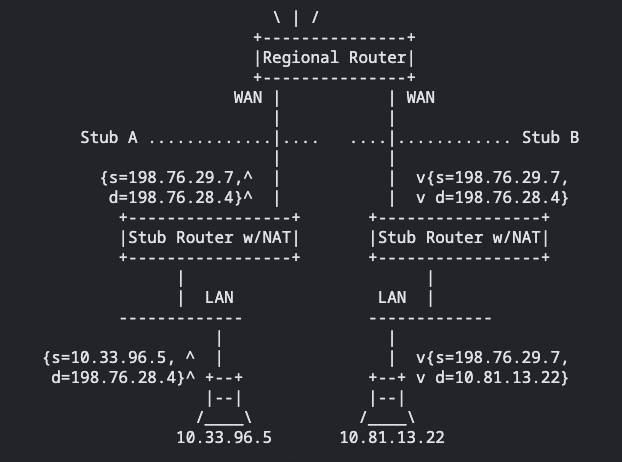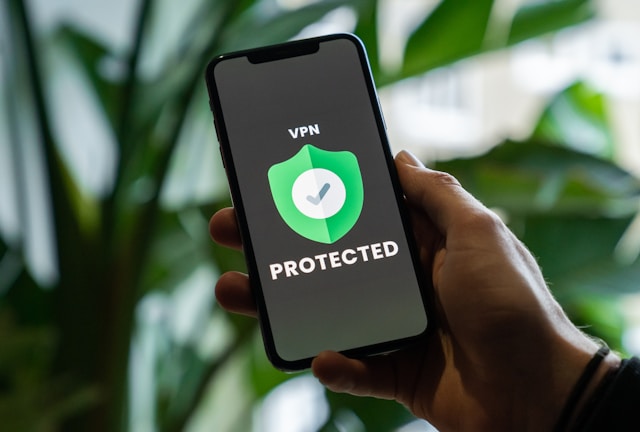When devices join the Internet, they get an IP address to uniquely identify them. But are there enough unique IP addresses for each device? The answer is no! There are a finite number of IP addresses. So, how does the internet meet the need for a unique identifier for each device? Through non routing IP addresses!
Devices use these IP addresses when they are not directly communicating outside the internal networks.
But what exactly are non-routable addresses? Let’s walk you through the entire concept. Read on!

Table of Contents
What Are Non Routing IP Addresses?
Non routing IP Addresses is an alternate term for private IP addresses. These IP addresses are available for use only in private networks and cannot route traffic over the public Internet.
This means that when packets leave internal networks for the public Internet, they don’t carry non-routable addresses. Rather, the network address translation (NAT) process assigns them routable or public IP addresses. We will discuss the NAT process more later in this article.
Now, what is the point of all this fuss? Why can’t all devices have a routable IP address from the onset?
Well, the Internet has a limited number of IP addresses and the demand for them is growing rapidly. So, setting a portion of the IP address space as non routing IP addresses aims to prevent IP space exhaustion.
By using non-routable addresses within the local area network (LAN), we conserve the pool of public IP addresses.
This technique ensures that we have enough addresses available for devices that need to connect to the internet directly.
For example, when you set up a home Wi-Fi network, your router assigns non-routable addresses to your devices. These addresses allow your devices to communicate with each other and connect to the internet using the router’s public IP.
Such a setup keeps internal traffic secure and also reduces the need for a large number of public IP addresses.
Do you want to know your device’s private and public IP addresses? Read this guide to learn how to find them.
Non routing IP addresses are also not globally unique. Different private networks can use the same non-routable addresses without conflict because these addresses don’t appear on the public Internet.

What Are IP Address Classes?
Categorizing IP addresses into classes simplifies the allocation of IPs across different networks. This classification ensures efficient use of the address space and organizes the internet.
There are five IP address classes: A, B, C, D, and E. Each class serves a specific purpose and has a certain range of addresses:
- Class A addresses range from 1.0.0.0 to 126.255.255.255. These addresses reserve the first octet (eight bits) for the network portion, leaving the remaining three octets for host addresses. This setup allows for millions of unique addresses within a single network.
- Class B addresses range from 128.0.0.0 to 191.255.255.255. The first two octets represent the network portion, while the last two octets are for host addresses. This class is suitable for medium-sized networks.
- Class C addresses range from 192.0.0.0 to 223.255.255.255 and cater to smaller networks. In this class, the first three octets identify the network, and only the last octet is for host addresses. This structure allows many networks but limits the number of devices per network.
- Class D addresses range from 224.0.0.0 to 239.255.255.255. These IPs are for use in multicast communication, which enables the simultaneous transmission of data to multiple destinations.
- Class E addresses range from 240.0.0.0 to 255.255.255.255. These addresses are not available for general public use and are for research and development purposes only.
Which of these IP address classes have non routing IP addresses, and what are their ranges? Let’s find out.

Private IP Address Ranges
In 1996, the Internet Engineering Task Force (IETF) introduced private IP addresses as a solution to IP space exhaustion. The IETF detailed the motivation and action plan in the RFC1918 document.
This document also specified private IP address ranges for use in private IP networks.
According to RFC1918, the non-routable address space for specific ranges in Classes A, B, and C:
- Class A private IP addresses: range from 10.0.0.0 to 10.255.255.255 and include 16,777,216 unique addresses.
- Class B private IP addresses: range from 172.16.0.0 to 172.31.255.255 and include 1,048,576 unique addresses.
- Class C private IPs: range from 192.168.0.0 to 192.168.255.255 and include 65,536 unique addresses.
Now, you might be wondering why there are fewer private IP addresses compared to public IP addresses. The answer is simple. The private IPs are fewer because they are adequate for internal networks. For example, what’s the average number of devices in a home Wi-Fi network? Barely more than 10-15 devices, right?
Similarly, a small office network typically doesn’t need more than the 65,536 addresses provided by the Class C range.
Since the Internet is only accessible for unique and routable IPs, how do devices with non-routable addresses use the Internet? Here’s how.

Network Address Translation (NAT)
Network address translation (NAT) is a router function that IETF described in RFC1631. NAT allows private IP addresses in internal networks to communicate on the internet by translating them into public IP addresses.
This translation of non routing IP addresses becomes necessary because communicating outside internal networks requires routable IPs.
By translating addresses, NAT conserves public IP addresses and improves network security by hiding private network structures.
When a device with a private IP address sends data to the Internet, the NAT-enabled router intercepts it. The router then replaces the private IP address with a public IP address.
The router tracks these translations in a table. This table helps the router route incoming responses back to the correct internal device.
When data returns from the internet, the router consults the table. It translates the public IP address back to the corresponding private IP address.
FAQ
What are non-routing IP addresses?
Non routing IP addresses are for use within private networks and cannot route traffic over the public internet.
What is the difference between private IP and public IP addresses?
Private IP addresses are hidden from external networks, and they are reusable in different private networks. In contrast, public IPs are globally unique and allow communication over the internet.
What is no IP routing?
No IP routing is a type of command or instruction that the network administrator gives to the router to disable routing.
Get IP Data From geoPlugin!
Since non routing IP addresses are private and hidden, they aren’t visible on public networks. So, if you run a website and want to geolocate your website visitors, you’ll have to use their public IPs.
IP geolocation gives you access to different details about website visitors. For instance, it lets you know their location down to the city level and their zip code. You can use this information for purposes such as location-aware marketing, geopricing, geofencing, and much more.
However, you cannot geolocate IPs on your own. You’ll need to use geolocation services such as geoPlugin. geoPlugin lets you geolocate IP for free and reveals a lot of information about each IP.
Sign up for geoPlugin today and reap the benefits of IP geolocation!












